By Glenn Barnett
The pages of history tend to dwell on the men who created empires. No matter how ephemeral may be the famed exploits of an Alexander, Caesar or Napoleon, historians have written volumes on their behalf. There is considerably less “press” for the short list of women who have built empires. One such was Zenobia of Palmyra and this is her story.
The year ad 260 was annis horribilis for the Roman world. The Franks plundered Gaul while the Goths overran Greece. But the biggest threat to the empire lay in the East where the Sassanian Persians had ended Armenia’s precarious independence, occupied Mesopotamia and pillaged Syria. The emperor Valerian, though in his sixties, personally led his army to face the Sassanian “King of Kings,” Shapur I.
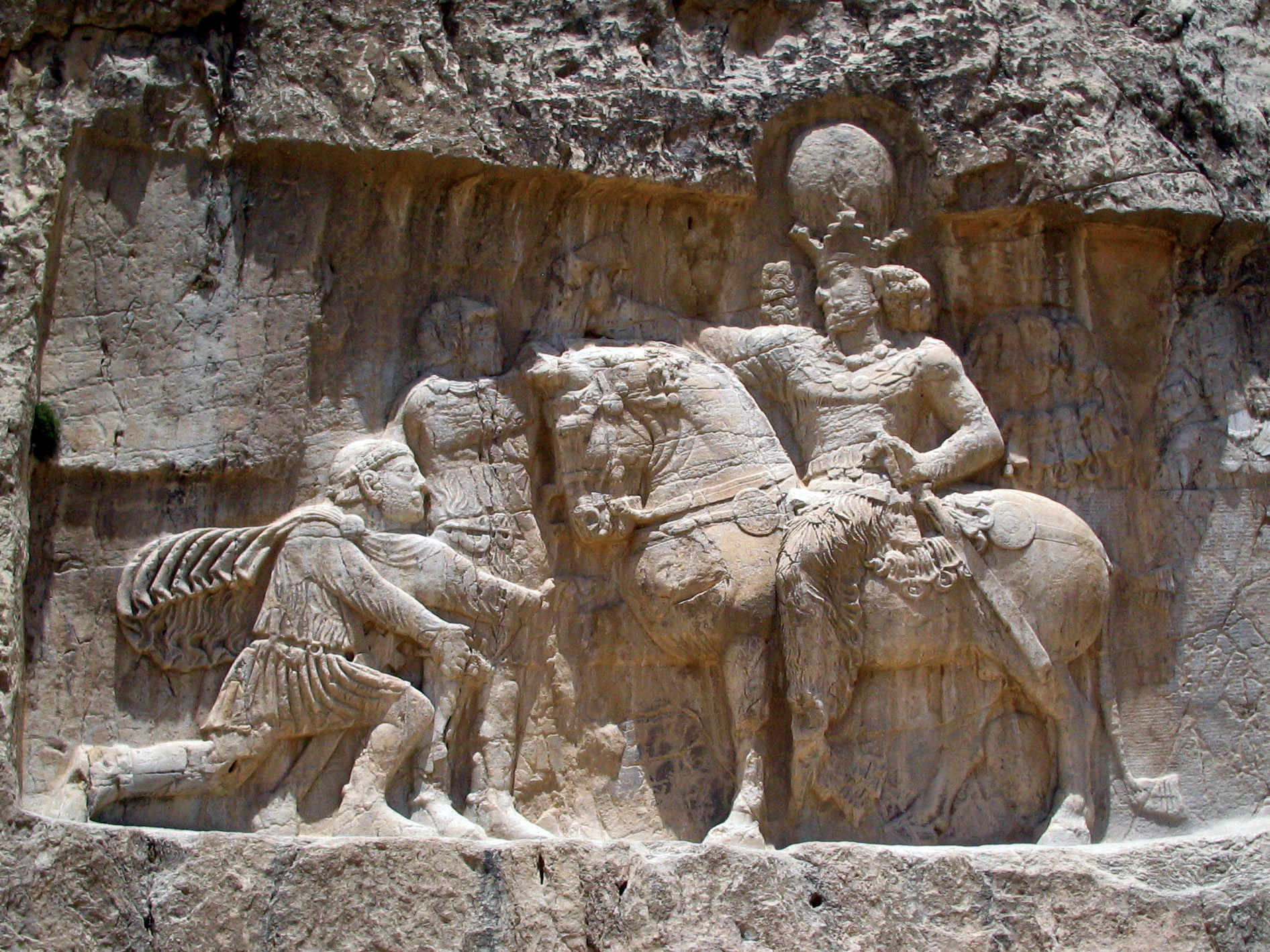
Another Devastating Defeat for the Roman Army
The armies met at Edessa, eerily close to Carrhae where Crassus and his army had perished in 53 bc.
The results were the same. Shapur’s larger force bottled up the Romans within hastily improvised earthworks and when thirst, starvation and disease took their toll, Valerian and his army (estimated at over 60,000 men) were made prisoners of the ancient enemy. It was the worst disaster of Roman arms to that time.
The defeat of the Roman expedition and humiliation of the captive emperor meant that there was no organized force to oppose the Persians east of the Bosphorus. The entire eastern Mediterranean lay open to plunder. Shapur quickly ravaged Antioch and raided as far as Ankara in the middle of Asia Minor.
Palmyra: Arch of the Fertile Crescent
Bypassed by the rapacious Persians was an oasis town in the Syrian desert called Palmyra by the Greeks and Tadmorby the Arabs. Long a Roman colony, Palmyra was a caravan town for goods flowing east and west. The very arch of the fertile crescent, Palmyra owed its livelihood to the steady flow of commerce between the Mediterranean and lands as far away as China.
Here ruled Odenathus, an Arab who by virtue of wealth was a Roman senator. At his side was his remarkable wife, Zenobia. Seeing which way the wind was blowing, Odenathus dispatched a train of camels bearing gifts along with a letter offering friendship to Shapur. But the gifts were spurned by the all-conquering Persian. “Who is this Odenathus who dares write me a letter?” he raged. “Let him come before me prostrate on the ground with his hands bound behind his back.”
Odenathus did come but, with an army rather than with his hands at his back. Gathering the remnants of the shattered Romans, the garrison at Palmyra and bands of swift horse- and camel-mounted bedouins, the Palmyrans met the bloated Persian host on its homeward journey. The Persians, bogged down by stolen treasure and prisoners, were perfect targets for hard-riding Arabs who thundered in upon the besotted invaders.
Getting Rich on Plunder – Even a Stolen Harem
The Palmyrans became rich on captured loot, freed hostages, and a most unique prize: Shapur’s harem. Odenathus became the first westerner since Alexander the Great, six hundred years before, to capture a Persian king’s harem. Shapur paid the price of leaving his rear exposed and retreated in confusion to his own country.
Odenathus and Zenobia thus filled the power vacuum left by the absent Romans and chastened Persians. Valerian’s son Gallienus was now emperor at Rome and he was grateful to the Palmyran for avenging his father and saving the empire. The Senate declared him a sort of co-emperor for the east. The declaration graciously acknowledged the reality of the situation. Odenathus was now the real as well as the titled ruler of Syria, Cilicia and Mesopotamia and protector of Armenia. For the first time the empire was divided between east and west.
A Ruler’s Death Avenged by his Formidable Wife
In the year 266 or 267 Odenathus was assassinated by a relative who then lay claim to the Palmyran throne. But he did not count on Odenathus’s widow, who was made of sterner stuff. She rallied her husband’s forces and quickly squashed the nascent rebellion, executing the perpetrators.
Thus enters onto the world stage one of the most amazing women in history. In his epic The Decline and Fall of the Roman Empire, Edward Gibbon wrote, “Zenobia is perhaps the only female whose superior genius broke through the servile indolence imposed on her sex by the climate and manners of Asia. She equaled in beauty her ancestor Cleopatra, and far surpassed that princess in chastity and valour.”
Beauty, Brains, and Grit and Heir to Cleopatra
The ancient writers take pains to tell us of her beauty. She had flashing coal-black eyes, pearly white teeth, dark Middle Eastern skin and wavy brunette hair reflecting her part-Greek and part-Arab lineage. Like Odenathus, she was born into an Arab tribe and was infused with Arabic tribal politics (Arab legends suggest that her father was killed in an intertribal dispute), but she was more. Her Greek lineage, she claimed, went back to the famous Cleopatra herself, which gave her claim as heir to the Macedonian dynasties of the past. She is said to have been able to speak Aramaic, Greek and some Latin as well as Egyptian. Learned and beautiful, she was poised to assume the mantle of Cleopatra.
By all accounts Zenobia was something of a tomboy. Inured to hardships she enjoyed the hunt—the sport of kings—much favored in Persian and Arab lands. She eschewed the closed carriage in favor of horseback and was equally at home on the back of a camel. When on campaign she earned fame and respect by marching by the mile on foot at the head of her troops.
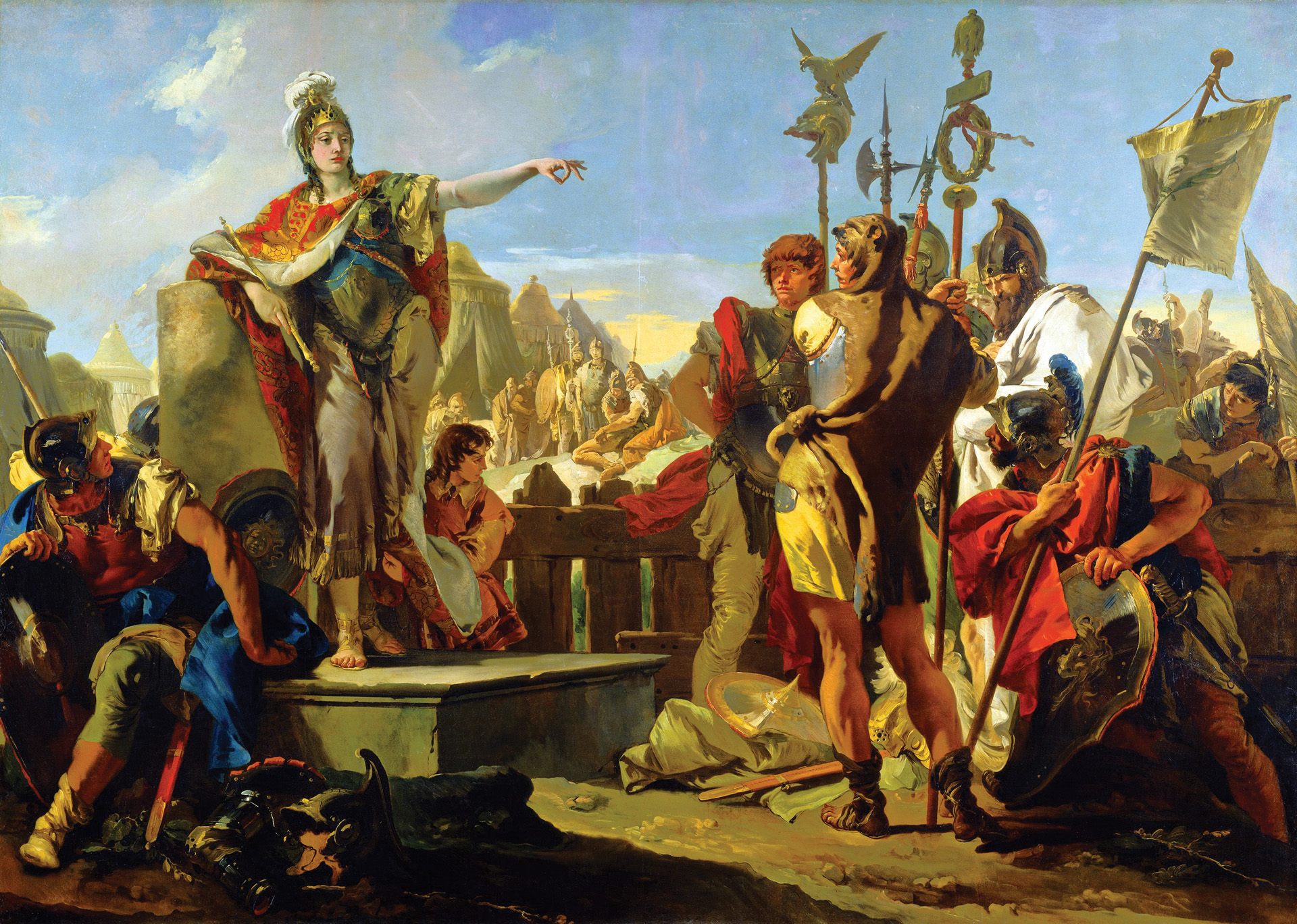
She was equally famous for her self-control. Her husband had been permitted to bed her only for purposes of procreation and, after a month, if the experiment failed she would receive him again for the same purpose. Now freed of marital duties she would soon cause Rome much consternation.
A Woman with Immense Power
At first she ruled as regent for her minor son Vaballath (Arabic for “gift of God”) but while she claimed for him all the titles that the Romans had given his father Odenathus, she went further and claimed the same titles for herself. While her son was proclaimed Augustus(emperor), she styled herself Augusta (empress). The Romans were furious with her. It was one thing to humbly accept a title offered by the Senate and People of Rome; it was quite another thing to assume such titles for oneself.
However there was little the Romans could do at the moment. The Goths, Franks and Alammani kept them busy with border wars while pretenders to the throne within the empire abounded. One of these was Victoria of Gaul. The armies of Britain, Gaul and Spain declared for her around the same time as Zenobia came to power, and for a brief moment in history two-thirds of the Roman Empire was ruled by women.
Meanwhile in 268, the emperor Gallienus, beset by insoluble troubles, was assassinated by rebellious generals. After the requisite power struggle he was followed to the throne by the new emperor, Claudius II, himself one of the rebels. So busy was he with other threats to Rome that he acquiesced passively to Zenobia’s claims.
Claudius reigned but a few months and spent all of that time in the field. Such was his prowess that he decisively defeated the Goths at the battle of Naissus (modern Nish), earning the title Gothicus Maximus. There wasn’t time for him to consolidate his gains, however, because he died within a year, laid low by the plague that at the time was rampant along the Danube. Again a dynastic struggle ensued before one of his generals, named Aurelian, took the reins of empire.
Zenobia Extends Her Reach
All the while Zenobia built her power in the east. Inheriting her husband’s lands and protectorates, she began to expand her reach throughout the eastern Mediterranean. She assisted the Armenians to throw off the Persian yoke and became their protector. She garrisoned cities as far as Mesopotamia in the east and Ankara in Asia Minor. Then she sent her army farther west to Bithynia province across the Hellespont from Byzantium. There she tried but failed to win over the local population. Arab sources tell of her expansion into the province of Felix Arabia while Jewish sources hint of her activities in Palestine.
The Jews were one people who were not enamored with her. Traditionally they sided with the Persians against the Romans who had evicted them from their homeland. They fought with Shapur and suffered when his armies met reverses at the hands of the Palmyrans.
Goths Causing Headaches for Rome
It was in Egypt, however, that Zenobia was most aggressive. An opportunity presented itself when Claudius recalled the Roman garrison in Egypt to reinforce his fight against the Goths. Tenagino Probus, Prefect of Egypt (not the future emperor), sailed with his fleet to confront the Gothic navy, which had penetrated the inner sea as far south as the island of Cyprus.
Probus left behind a militia of green local levees to guard the all-important province and breadbasket of the Roman world. Without the heavy hand of the Roman garrison to keep the peace, the factious rival ethnic and religious groups of Alexandria rioted against each other. One Alexandrian faction led by a Palmyran sympathizer named Timagenes asked Zenobia for protection. She was more than willing to comply. It has been suggested that she might even have masterminded Timagenes’s little scheme in order to provide an excuse for her invasion.
Zenobia Intervenes in Egypt to Roman Consternation
Under the command of her best general, Zabdas, who had helped her crush her husband’s assassins, she sent an army of 70,000 men marching south along the Palestinian coast to the land of her ancestor, Cleopatra.
Zenobia sought to placate Roman concerns about her action by assuring them that she was only calming the situation in strife-torn Egypt in the name of Rome and her western colleague the new emperor Aurelian. As proof she allowed the grain ships to sail as usual to the Eternal City.
She even had coins struck in Antioch and Alexandria with Aurelian’s portrait on one side and Vaballath’s on the other, indicating their corule of the empire. But the message was less than subtle. The mint mark was located under Aurelian’s portrait making his the reverse or backside of the coin. Her son got top billing. Aurelian minted no such coins.
The Romans were in obvious panic about this new threat to their shrinking authority. The fact that Egyptian grain was indispensable to feeding (and pacifying) the Roman populace made Zenobia’s interference intolerable.
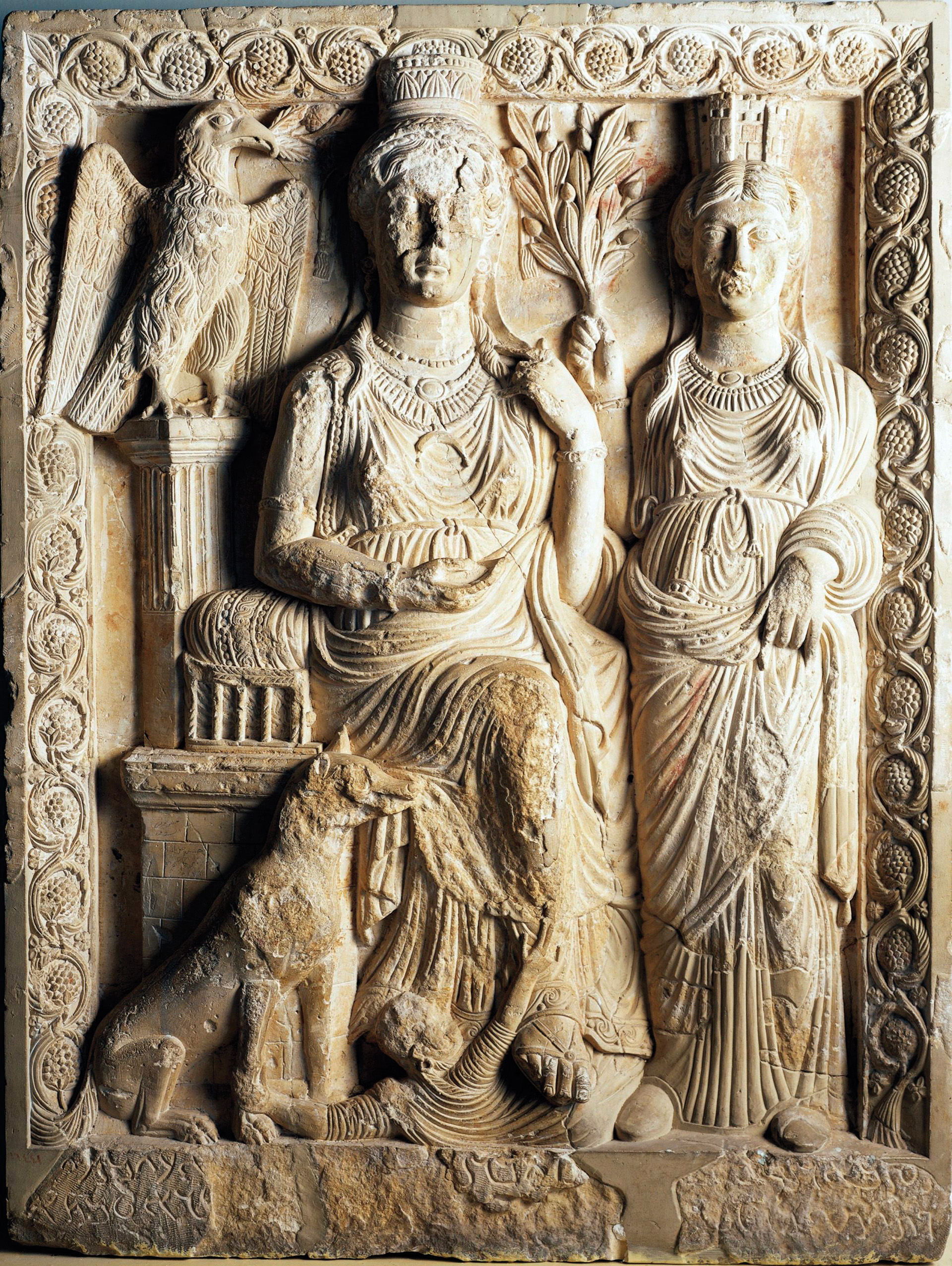
Rome Counter Punches in Egypt
Prefect Probus, having decisively defeated the Gothic fleet as part of Rome’s overall victory over the barbarian invaders, returned hurriedly to Egypt to organize the defense of his province against the Syrian interlopers. He rallied an army of 50,000—most were probably raw conscripts—and managed to cut off the Palmyrans in the delta.
Contemporary historians give a sketchy account of a see-saw campaign between the antagonists, but we know that Zabdas came out of Alexandria and a climactic pitched battle was fought in the desert near Suez between the armies of Rome and Syria. Local guides led a small Palmyran party to surprise the main camp of the Romans. Probus was either killed or killed himself. Zenobia’s next coins would be struck with Vaballath’s portrait alone.
St. Anthony Retreats to Cave to Avoid Conscription
It was during this time of conflict in Egypt that St. Anthony, first of the Christian cave-dwelling hermits, slipped into the desert to be alone—the ancient world’s most famous draft dodger. Meanwhile the victorious Zabdas left an occupation force of five thousand in country and marched back to Syria to support Zenobia in her conquest of Asia Minor.
The mystique of Cleopatra weighed heavily on the Palmyran queen. She now ruled the lands of her forebear and, like her, snubbed her nose at Rome. Further, she bought and used a set of gold plate that once belonged to the Queen of the Nile.
Zenobia Amasses Immense Territory and Control
Even more telling was a column erected at Palmyra in Zenobia’s honor which was inscribed with the year 582. This was a direct reference to the Seleucid calendar and shows that Zenobia thought herself to be heir to the ancient Macedonian dynasties of Syria (Seleucid) as well as of Egypt (Ptolemy). These Greco/Macedonian empires predated the Roman power and were at one time the most energetic enemies of Rome. There could be no doubt now that she was a serious threat to Aurelian’s authority.
Zenobia then ruled the two largest cities in the empire after Rome: Alexandria in Egypt and Antioch in Syria. She controlled over one-third of the empire’s food supply and was reaching to control the provinces in Anatolia, source of much of the Roman army manpower. It would compare today as if she reigned over Los Angeles and Chicago and everything in between.
A Chaste Empress in a Regal Court
While Zenobia’s armies were spreading her influence ever farther afield, she beautified Palmyra, a city already rich from trade and now newly wealthy as the center of an empire. Her court combined Western tradition with the pomp of the East. Her children received a Latin/Greek education at the hands of the prominent philosopher and rhetorician Longinus, who was wooed to the desert from his prestigious post as director of the Platonic Academy in Athens. Soon his counsel made him an important adviser to the queen. Next to his friend Plotinus (they were students together in youth), Longinus was the most famous neo-Platonic philosopher of the age.
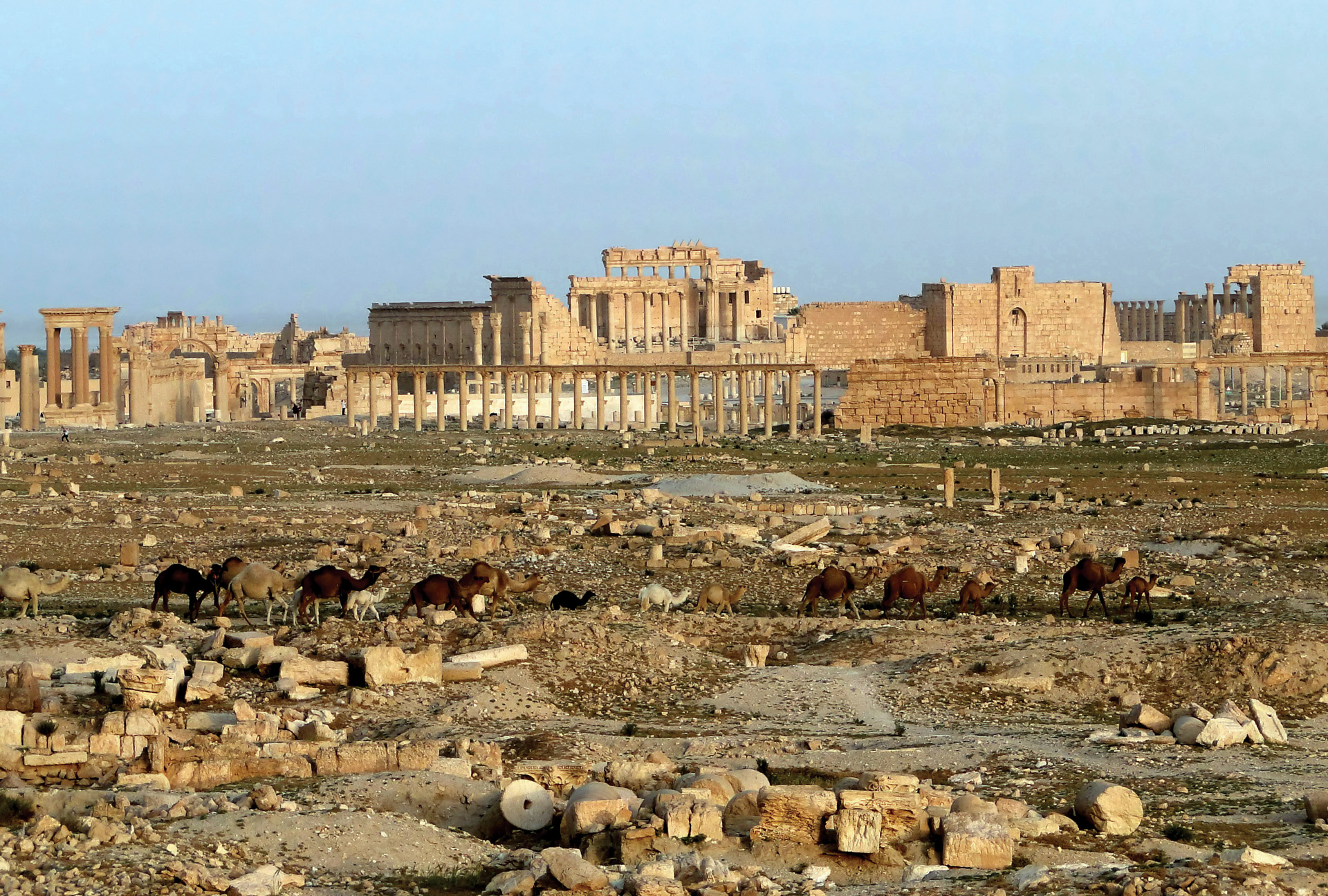
At court Zenobia’s entourage prostrated themselves before her in the Persian manner, and when not on campaign, where she wore a simple rider’s tunic, she dressed lavishly in purple silks and jewels in robes that clasped at her waist while leaving one darkly tanned shoulder exposed. She is said to have been chaste after the death of her husband and surrounded herself with a personal staff of aging eunuchs and young girls.
The dual nature of Zenobia and her city was due to their location between the Greco-Roman and Persian worlds. The duality is expressed on coins she had minted for her son Vaballath, which alternately refer to him as a Roman Augustusand by the Persian title “King of Kings.”
Rome Has its Hands Full Warding off Barbarians
Meanwhile in Rome, Aurelian’s early reign was beset with worries other than Zenobia. Two separate barbarian invasions of Italy demanded his immediate attention. After expelling the invaders from the peninsula in three hard-fought battles, he commissioned the construction of new defensive walls around Rome that today still bear his name.
His next task was to subdue the Gallic pretender Tetricus, heir of the now-dead Victoria, who yet resisted his authority. When that task was complete he turned his army eastward for the long-postponed reckoning with Zenobia. At the same time he dispatched General Probus (the future emperor, not the dead Prefect) across the sea to retake Egypt.
Zenobia’s Roman Foe was no Slouch Either
Aurelian’s army nickname was Manu ad ferrum, “hand on sword.” It was a fitting tribute to one of the greatest soldier-emperors that Rome ever produced. Of humble Illyrian birth, he worked his way up through the ranks of the army to become commander of cavalry under Claudius. The army rallied to him when he declared himself a candidate for the throne. His coins leave a portrait of a thin-faced man with a close-cropped full beard. He was 55 when he assumed the purple in 270. He would live less than five years more.
The coming of Aurelian marked Zenobia’s first reversal. Victorious until then, her forces in Bithynia recoiled before the approach of the single-minded emperor. As he traveled across Asia Minor, city after city opened its gates to him renewing their ancient loyalties to the Roman power. Along his line of march his army grew as local detachments and auxiliaries joined his crusade against the Syrian usurper.
The Long March into Battle
It has been estimated that the march from Rome to Antioch by a Roman army in full gear and hauling its equipment would take around 124 days. The army would have marched in the accustomed Roman order. First, outriders, scouts and foragers. With them would be pioneers to clear the roads of obstacles and other teams to lay out the camp for that night’s bivouac.
Then came the baggage train of the leading officers, protected by a cavalry escort. Behind these wagons would be Aurelian with his staff and personal guard of cavalry and infantry lancers. Behind him would march the military siege engines: ballistas, catapults (if indeed these were used), and so forth. Next, marching in columns of six on Roman roads built for the purpose came the main body of the army. The army was followed by the pack animals, camp followers of every description and a rear guard.
“In This Town I Will Not Leave Even a Dog Alive”
The first city to defy the Roman progress was Tyana, located just west of the strategically important “Cilician Gates.” Refusing submission to Rome, in its loyalty to Zenobia, little Tyana locked itself up within its walls.
In his anger Aurelian vowed that, “In this town I will not leave even a dog alive.” His army, after its long march from Italy, looked forward eagerly to the plunder of the resistant city. But when the city was betrayed by a citizen and the Romans gained entrance by a compromised gate, Aurelian demurred. He did not allow his army to pillage the town. When reminded of his vow to not even leave a dog alive, he ordered that all the dogs in Tyana would be killed but the citizens left in peace.
Legend has it that Aurelian’s leniency was inspired by a dream he had of the sage Apollonius. This famous pagan teacher had been born in Tyana around the same time as Jesus in Bethlehem, and was credited with wisdom and wondrous miracles in his own right.
A Big Oversight of a Little Gap
Aurelian lost no time in securing the only pass through the mountains of eastern Anatolia. Zenobia, like so many warriors before and after her, neglected to secure the narrow gorge through Mt. Taurus known as the Cilician Gates. Traverse these “gates” and the traveler enters the province of Cilicia. Easily defended by a small force, this strategic position could have held up Aurelian for weeks. As it was he marched directly on to Antioch unhindered.
It is not known why Zenobia abandoned Asia Minor with so little fight. Perhaps it was because of Probus being at sea. Ostensibly on his way to Egypt the future emperor could just as easily have landed at St. Paul’s city of Tarsus, occupied those same Cilician gates and bottled up her army in Anatolia where it would be cut off from its Syrian base. In any event, the move into Asia Minor had left her dangerously over- extended. She now chose Antioch as the place to stand and fight and there she waited for Aurelian.
On the march to finally come to grips with the elusive Zenobia, the emperor and his army passed through the famous plains of Issus where in 333 bc a determined army of Macedonians and Greeks crushed a Persian host and opened the way for Alexander to reach India.
Romans Tighten the Noose on Zenobia
Zenobia’s anxiety must have been great as the Romans crossed the Orontes River upstream from Antioch. The Roman maneuver, approaching from the east, could potentially cut her off from her desert home.
Zabdas readied his men for the battle. The Palmyran forces were anchored on the armored horsemen known as cataphracts. In the heavy cavalry of the ancient world, horse and rider were protected by scaled or the newer chain-mail armor, the forerunner of the knights of the Middle Ages. Reasonably safe from most infantry-thrown spears and arrows, the heavily armored and armed cataphracts were used effectively in the past to crush the formerly invincible Roman infantry line. These heavy hitters were supported by light archers both mounted and on foot who could take advantage of disordered infantry.
Aurelian Proves the Superior Tactitian
Historians like to say that Rome won its wars with infantry and lost its wars with cavalry. Aurelian was the exception. He was a cavalry man. Marching down the eastern bank of the Orontes toward Antioch he calmly observed the approach of the cataphracts. Sensing danger, he ordered his infantry to the safety of the west bank of the river and opposed Zabdas with his own light cavalry of Moorish and Dalmatian riders.
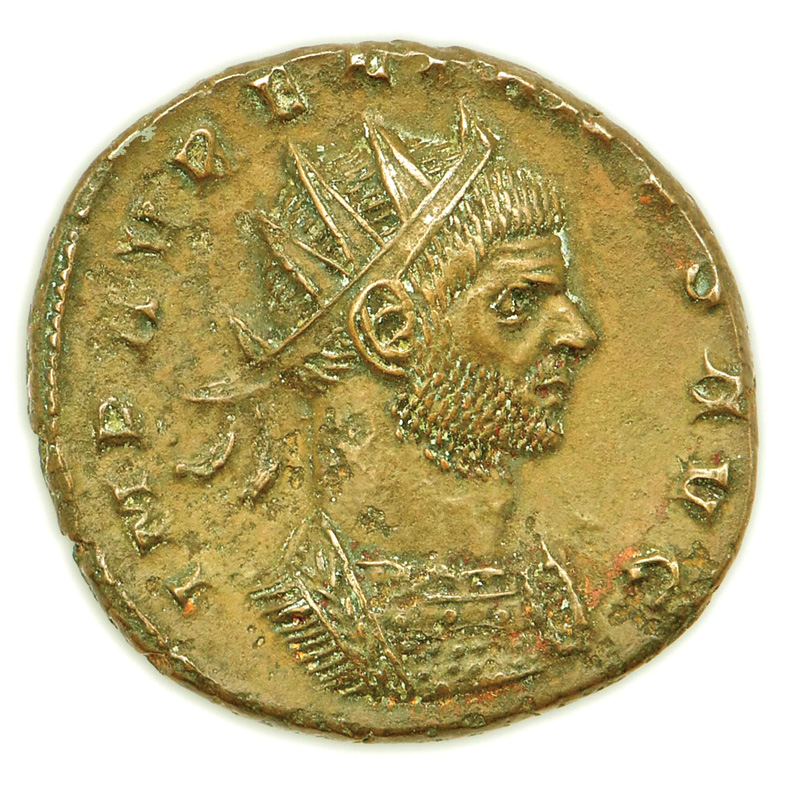
He instructed them to retreat before the charging cataphracts and their supporting horse archers. Soon heavy and light cavalry were chasing each other all over the dusty plains. Zenobia’s heavily armored horses and riders soon tired from their heated exertion in the scorching summer sun. They also lost their tightly packed defensive formation. When the Palmyrans were thus wearied and thinly spread and their horse archers had spent their quivers, the Romans turned at a signal and easily defeated them. The Syrians turned and fled.
Cunning Ruse of Disguise Facilitates Zenobia’s Escape
Zabdas feared that the citizens of Antioch would turn against Zenobia if they saw that her forces were defeated. He found a middle-aged man who somewhat resembled Aurelian, covered him in a purple cloak, and entered the city claiming victory and the capture of the Roman emperor. That night Zenobia and her army evacuated Antioch.
They retreated southward through the sacred grove of Daphne with its laurel trees and springs of pure water that Alexander the Great had once likened to his mother’s milk. Leaving a rear guard on the heights, they fled into the interior of Syria. The next morning Antioch opened its gates to Aurelian and just like that, switched sides.
Zenobia and Zabdas made another stand at Emesa (modern Hims), the home of the former Syrian/Roman Empress Julia Domna, the wife of Septimius Severus, mother of Caracalla and great aunt to dissipated, sun-worshiping Elagabalus and his more virtuous cousin Severus Alexander. The imperial tradition was strong in Emesa and since the defeat of Valerian the city had been loyal to its new Syrian empress.
A Second Crack at the Roman Army
The second battle just north of Emesa once again pitted the Syrian heavy cavalry, now reinforced with hard-riding Arab units, against the Roman light cavalry with the infantry again standing aside. Zabdas ordered the cataphracts to stay in their defensive formation.
As the armies came together, Roman cavalry gave way to prevent being flanked by the larger force of Palmyran horsemen. The Palmyrans, exploiting their numerical advantage, pushed hard against the crumbling Roman line and inflicted severe casualties. But once again in the heat of battle the heavy cavalry became separated and exhausted by their killing work.
Aurelian now unleashed his infantry which ran between the isolated cataphracts and brought down the heavily armored riders individually. Instrumental in this contest was a force of Palestinian “clubmen.” Armed only with clubs and maces, the Palestinians (apparently resenting the rule of Zenobia) had rallied to Aurelian and now battered the otherwise impervious scaled or mailed horse and rider. Easily unhorsed by the unexpected blows of heavy clubs, the Palmyrans fell in great numbers. Panic ensued and the survivors fled into the desert.
Zenobia Flees Toward Home after Defeat
Zenobia had nowhere else to go but back home to Palmyra. She must have felt like Cleopatra after the battle of Actium for the same scenario was playing itself out. The long retreat followed inevitably by a victorious and ruthless enemy.
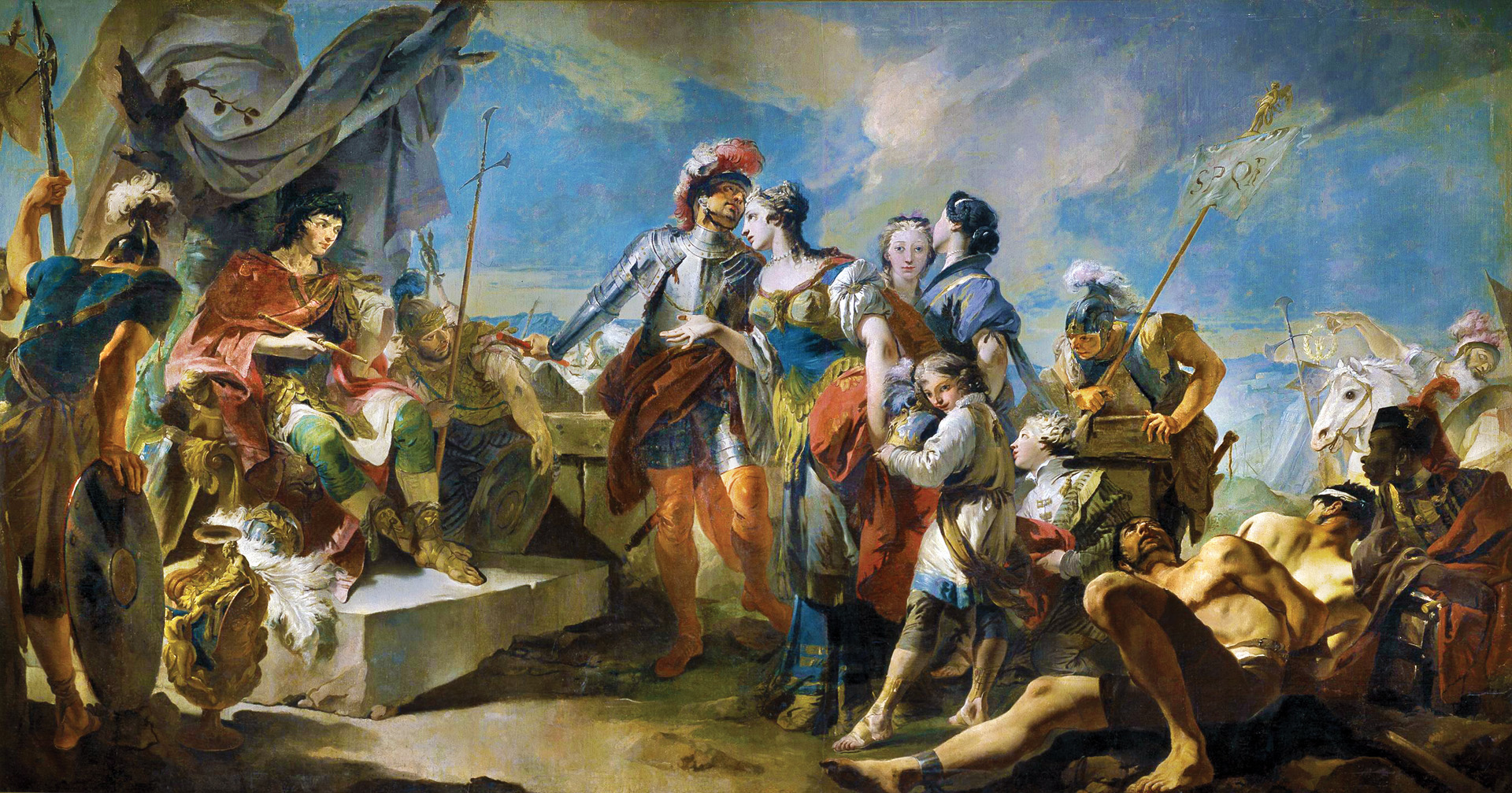
In Palmyra she hoped the vast desert would protect her from the invader who had stripped her of her empire. For Aurelian the challenge was to move six legions (perhaps 40,000 men) with all of their equipment, siege engines and supplies across 140 kilometers of empty desert, a three-day journey. Harassed by bedouin raiders loyal to Zenobia, he nevertheless made the march and enveloped the city. Once there he had to sustain his men and animals with continuous supply trains, a logistical miracle but the kind of task that distinguished the Roman army.
Plea For Help Falls on Deaf Ears in Persia
Zenobia swallowed her pride and sent urgent pleas to Persia for help against a mutual enemy. But the old nemesis Shapur was on his death bed and his minions were far more concerned with the succession than the fate of Palmyra and the fading star of its queen. Let Persia’s two enemies battle it out among themselves.
No help came for Zenobia. But the siege was not easy for the Romans. The midsummer heat was stifling. Nights brought Arab raids, howling jackals and painful scorpion stings. Aurelian himself was struck by an arrow during the siege.
A Woman Not to be Underestimated
He wrote about his troubles to the Senate, “The Roman people speak with contempt of the war which I am waging against a woman. They are ignorant both of the character and the power of Zenobia. It is impossible to enumerate her warlike preparations, of stones, of arrows, and of every species of missile weapons. Every part of the walls is provided with two or three balista and artificial fires are thrown from her military engines. The fear of punishment has armed her with a desperate courage.”
The protracted siege was demoralizing to the city’s inhabitants as well. No more so than the day that Zenobia’s Armenian allies folded their tents and suddenly shifted their allegiance en masse to Aurelian. They were allowed to leave in peace or stay and fight on the Roman side.
The Queen Escapes from Her Starved Out City
Food and supplies dried up quickly within the walls as the life-giving caravans were prevented from approaching. A city long used to luxury and the wealth that the whole world had once sent through her gates became impoverished and isolated. The famed palm groves which gave their name to the city were cut down by the enemy for his own purposes. The carefully cultivated and irrigated fields round about were trampled and destroyed.
Aurelian offered leniency to the citizens of Palmyra if they would turn over their queen to him. But they spurned the offer. At length, though, Zenobia and her people could no longer endure the pressure. At that point Zenobia fled rather than surrender. One night she mounted a fast-racing camel and escaped through the Roman lines into the lonely desert beyond. She rode rapidly to the east, to Persia and freedom. When Aurelian learned of her escape he sent his cavalry after her.
Returned in Chains; History Repeats Itself
After a protracted chase they finally caught up with her at the banks of the Euphrates trying to cross to safety. She was captured and returned as a prisoner to her enemy. At the sight of their queen in chains, Palmyra surrendered to the Romans.
Now the scene of Octavian interviewing a defeated Cleopatra was played out again in the fateful desert meeting between Aurelian and Zenobia. Like Octavian, Aurelian wanted this infamous queen, enemy of Rome, alive to adorn his Triumph. Like Cleopatra, Zenobia would rather die than be so dishonored.
In the end they made a deal. Perhaps Aurelian offered to spare her children if she complied (or conversely, to kill them if she did not). She was marched away across the desert and displayed at the Hippodrome in Antioch astride her camel. From there she was sent on to Rome to await the pleasure of her conqueror.
In the end, her advisers and friends were the ones who paid the price for her rebellion. Many, including Longinus and Zabdas, were tried and executed. As for Palmyra, it was respected by the emperor, who only exacted tribute and left a garrison of archers within its walls before marching away.
A Final Uprising and Crushing Reprisal
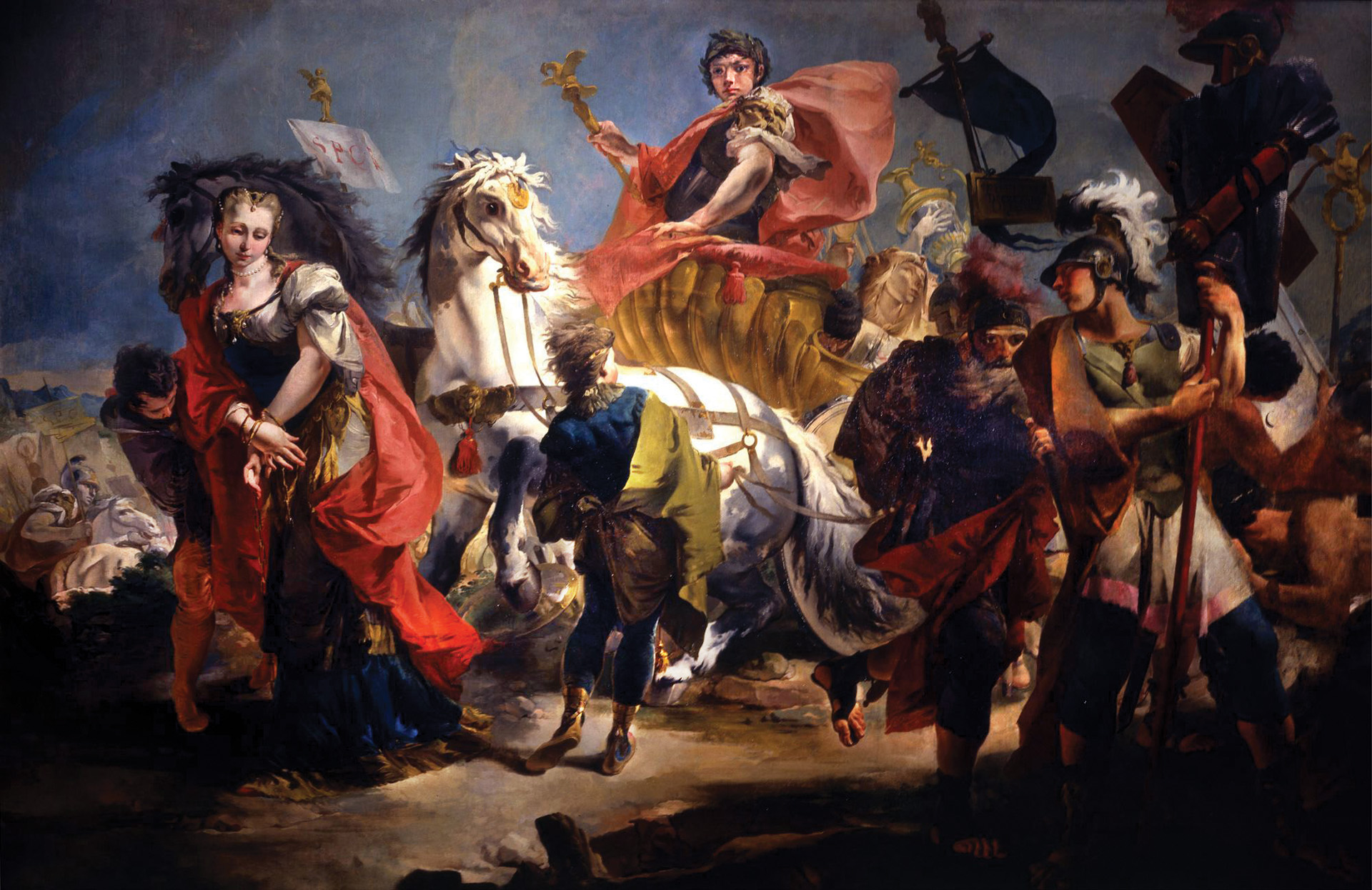
But when, after another long march, the army reached the Bosphorus, news came that the Palmyrans had risen up and slain his garrison. Furious at the duplicity, Aurelian turned on his heels and was upon Palmyra before the rebels were ready for him. This time the emperor allowed the long-simmering blood lust of his soldiers to be vented upon the offending city and its populace. Palmyra never recovered.
Back at Rome, the day finally came for Aurelian’s Triumph. Zenobia was fettered with shackles of heavy gold and dressed in robes sewn with jewels. A slave had to help support the weight of the treasure with which she was burdened. She was made to walk in front of Aurelian’s bejeweled chariot, which was pulled ostentatiously along by four stags.
Defeated Zenobia Made into a Roman Spectacle
The Triumph lasted from dawn till dusk and included elephants, giraffes, tigers, captured enemy chariots, looted treasure and hosts of enemy soldiers, their hands bound tightly behind them. But the star attraction for the neck-craning crowd was the Saracen usurper, the desert queen who thought herself to be Cleopatra. They gazed and shouted at her with mixed derision and pity.
After this humiliating day Zenobia drops from history. She played her spectacular part and made her grand exit. Aurelian reportedly gave her a villa at Tivoli and arranged good marriages for her remaining children. Some say she and Aurelian became lovers. We don’t know.
We do know that Aurelian’s own glory was fleeting. In the following year (275) he was assassinated by his generals while on campaign in Thrace. He had restored the central authority of the emperor over the entire Roman realm but did not live to enjoy the fruits of victory.
A Warrior Princess Who Inspired Future Generations of Women
Zenobia’s place in history is obscure, coming as it did after the glory days of the Roman Empire and a generation before Constantine. But she is one of very few women in history who had advantages and was not content to rest upon them. In a very short time, by the force of her will, she created an empire that bested Persia’s and rivaled Rome’s. She was reportedly admired by Catherine the Great and was ever inspirational to the short list of future warrior queens.
As for her fabled desert city, Edward Gibbon sums it up best, “Palmyra, for a while, stood forth the rival of Rome; but the competition was fatal, and ages of prosperity were sacrificed to a moment of glory.”
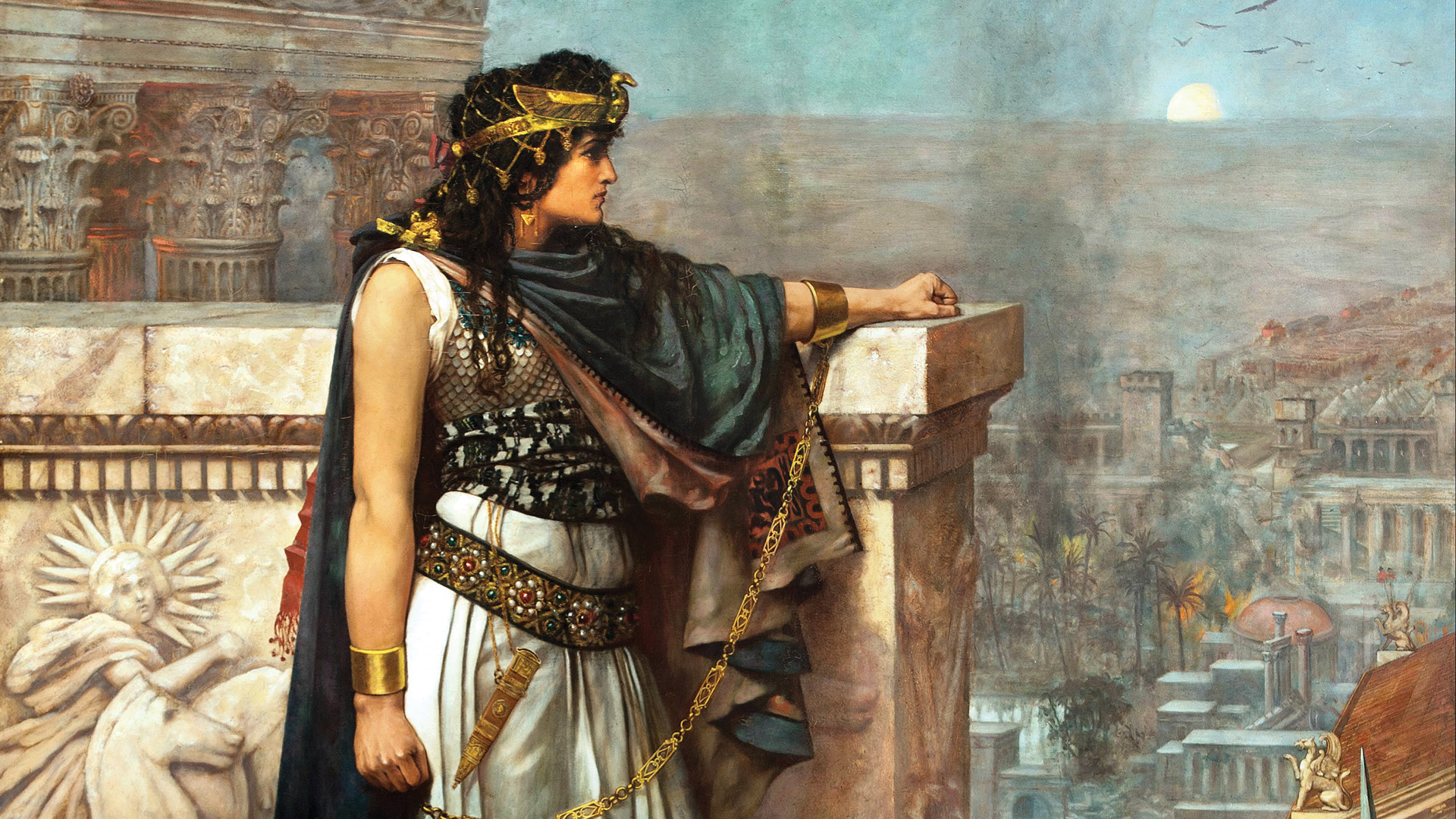
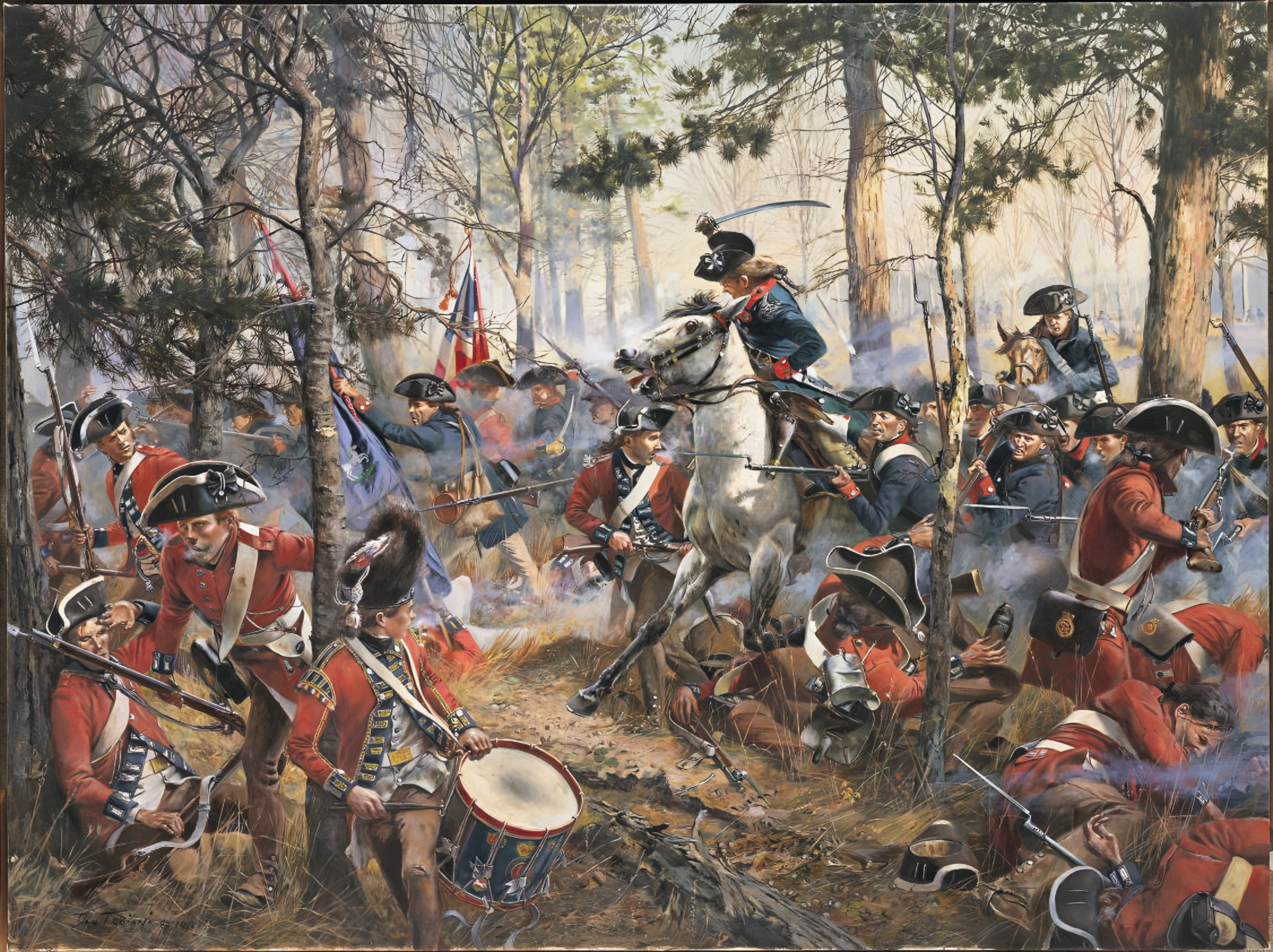
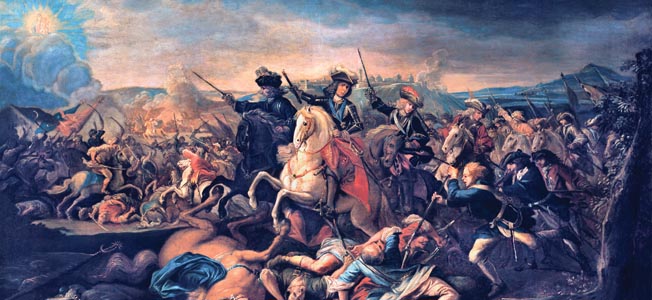

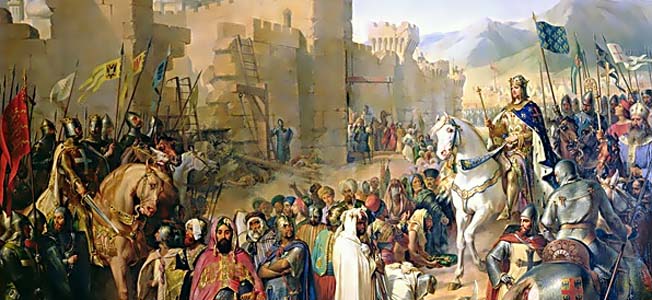
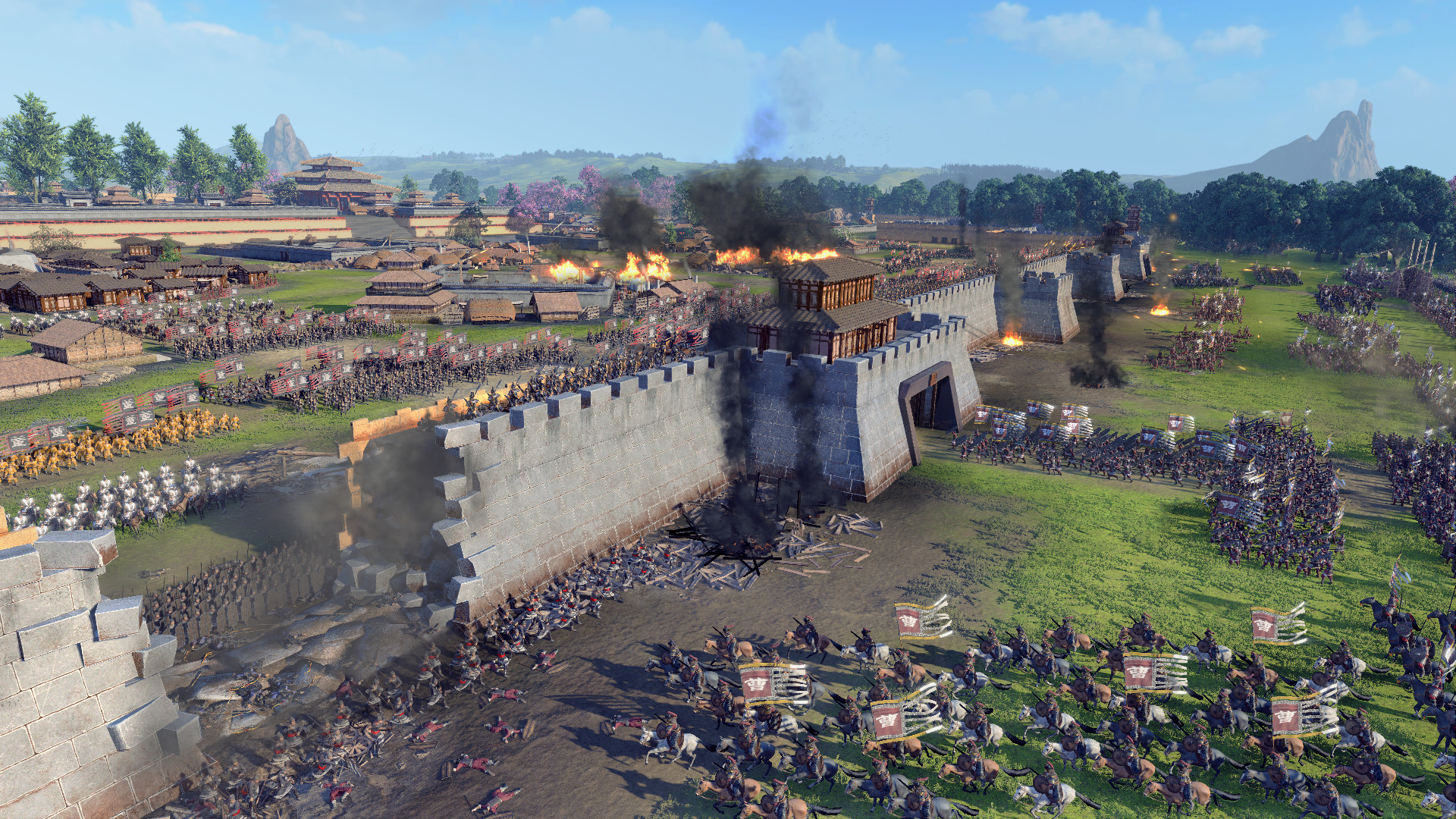


Join The Conversation
Comments
View All Comments